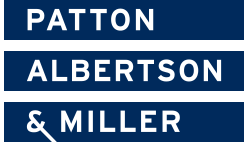
High-Income Earners: Minimizing Taxes and Protecting Assets with a Defined Benefit Plan
Physicians, business owners, professionals, and self-employed individuals often face higher taxes than most Americans, but there are many strategies you can implement to keep more of your hard-earned money. In 2017, there are some concrete financial steps that you can take to help reduce taxes and increase your asset protection—all with the use of a lesser-known type of defined benefit plan, known as a Cash Balance Plan.
Defining a Defined Benefit Plan
When it comes to retirement and tax-year planning, many successful professionals and business owners are maxing out their personal 401(k), amortizing the depreciation of their equipment, and maybe even adding several employees into a profit-sharing plan. At the same time, they’re still taking home a salary north of $250,000. And, despite their best efforts, they still get hit with a sizeable year-end tax bill. How can you avoid this?
First, set up a Defined Benefit Plan within the parameters of the Employee Retirement Income Security Act (ERISA). This law is administered by the Department of Labor and controls many aspects of retirement plans like Pensions, 403(b)s and 401(k)s.
A Defined Benefit (DB) or Pension Plan is different from a Defined Contribution (DC) plan like a 401(k) in that a Pension Plan is provided for with funds by the employer. When retirement age is reached, the employee will then draw on that pension a fixed monthly installment or “defined benefit.”
Recent economic volatility, coupled with inaccurate mortality tables and actuary models, has led to funding shortfalls for large private and government pension plans. As such, DB plans have fallen in favor to DC plans—in the 1980s more than 60 percent of retirement plans were pensions alone, compared today with approximately 4 percent.
DB/DC Alchemy: Cash Balance Plans
While Defined Benefit plans have fallen out of favor, they still hold great value for high-income earners. This is especially true of “hybrid” plans that combine DB and DC elements in a unique alchemy. These are known as Cash Balance Defined Benefit Plans.
As a high-income earner, developing a Cash Balance Plan, and making contributions, can help significantly offset remaining tax liabilities after your own 401(k) has already reached its maximum limit.
As an extended benefit, contributions to the Cash Balance Plan are now protected from bankruptcy and creditors. As with a traditional DB or DC plan, these personal assets will grow tax-deferred.
A Look at the Numbers
In the 2016 tax year, a maximum contribution to a Cash Balance Pension Plan could be as much as $137,908. This means that a business owner, private practice physician, professionals, or self-employed individual could combine this Cash Balance contribution with their 401(k) maximum contribution of up to $24,000. In total, this can lead to more than $155,000 in tax-deferred retirement benefit contributions. The contribution limits and personal tax benefit of this additional contribution are controlled by age, years to retirement and the location of the practice.
Now, compare this to the max allowable 401(k)-only contributions in 2016. This would typically be limited at just $59,000. This is essentially a $100,000 difference against the 401(k)-Cash Balance combination, which can be used to offset any tax liabilities that may exist for an outsized income.
Controlling Risk
As the owner of a business or practice with a Cash Balance Plan you are likely a plan fiduciary. This puts you under the strict guidelines of ERISA, including the various “standards” that help protect plan participants, e.g. the sole interest standard. Unlike other plans, with a Cash Balance Plan, you bear the responsibility for plan performance.
Performance can be pegged to a benchmark (e.g. Treasury Yields) or an assumed rate of return, often called the “interest-credentialing rate.” It can also be set at an agreed-upon rate with participants—say 5 percent. Regardless, if the plan fails to perform in any of these scenarios, the owner/plan fiduciary is likely responsible for making up the cash shortfall with additional contributions.
In Conclusion
If you’re a high-income earner, it’s likely that you’re focusing on your business—not your retirement plans and tax liabilities. That’s why it’s prudent to engage a true fiduciary to help you sort through both your personal and professional wealth. A true fiduciary with a focus towards mitigating risk, controlling fees and providing you with a high-level of service and investment insight.

